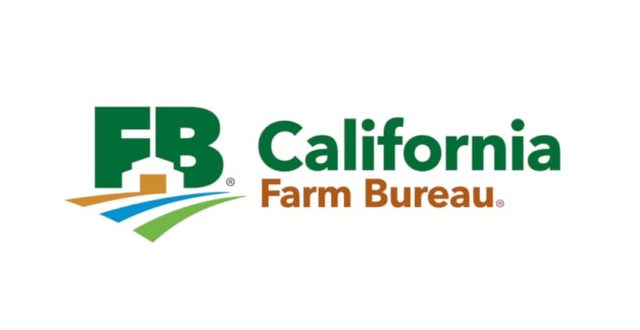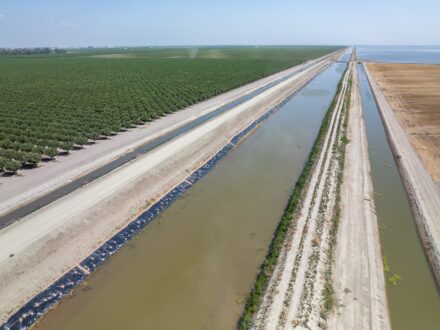Apr 19, 2024Land-use bill for solar sites opposed
Roughly half of California’s 30 million acres of farmland is protected from development by the California Land Conservation Act of 1965.
Proposed state legislation to modify California’s longstanding farmland conservation law could pave the way for large swaths of farm acreage to be repurposed as sites for renewable energy projects.
The California Land Conservation Act of 1965, commonly known as the Williamson Act, preserves farmland by assessing property taxes based on the land’s agricultural value rather than its full market value. Landowners with Williamson Act contracts, which cover about half the state’s 30 million acres of farm and ranchland, generally see a 20% to 75% reduction in property taxes.
The contracts are agreed between landowners and counties or cities and can only be dissolved by paying a fee of 12.5% of the land value or through a nonrenewal process that takes nine years.


Assembly Bill 2528, introduced by Assembly Member Joaquin Arambula, D-Fresno, would allow owners of Williamson Act land that lacks sufficient water for farming to cancel their contracts — without paying a fee or waiting nine years —if the land is used for wind or solar energy projects. The bill is sponsored by the Large-scale Solar Association.
The proposed legislation seeks to align the state’s renewable energy and groundwater management goals.
California’s Sustainable Groundwater Management Act, or SGMA, requires users to bring groundwater basins into balance within the next two decades. It is expected to take more than 500,000 acres of San Joaquin Valley farmland out of production by 2040, according to a report by the nonpartisan Public Policy Institute of California, or PPIC.
Meanwhile, for California to achieve its objective of 100% clean energy by 2045, it will need to dramatically expand its solar energy capacity, an undertaking projected to require up to 480,000 acres of land.
Arambula said in an interview that, in light of these circumstances, water-constrained farmland owners need to be given new land-use options, and solar companies need space to expand the production of renewable energy. “That was the nexus with which I brought this bill,” he said.
Arambula emphasized that “the goal here isn’t to take productive farmland out of production, but to take land that otherwise would not be produced upon because of water scarcity.”
Farm advocates have opposed the bill, warning that it could have unintended consequences. The proposed law may tempt economically stressed farmland owners to exit their conservation contracts, they said, resulting in the loss of farmland and food supply.
“We have a lot of very nervous landowners,” said Tricia Stever Blattler, executive director of the Tulare County Farm Bureau, referring to concerns about the region’s depleted aquifers. “We don’t know if some of these conditions can be reversible.”
Landowners can earn anywhere from two to seven times as much annual revenue renting land to solar companies as they do from farming it, according to the PPIC report titled “Solar Energy and Groundwater in the San Joaquin Valley.”
Farm advocates expressed concern that giving landowners a free way out of farmland conservation contracts, contingent on water availability, could cause some who have been motivated to solve their water problems to instead claim they’re unsolvable.
“We respect the fact that farm families need flexibility in what they’re doing, and that SGMA is putting substantial pressure in some places on farmland,” said Chris Scheuring, senior counsel for the California Farm Bureau. But, he said, “On a system level, we want to conserve farmland.”
AB 2528 would allow landowners in high- and medium-priority groundwater basins — those judged to have the least sustainable groundwater supplies — to petition their city or county to cancel their Williamson Act contracts. Those basins cover most of the Central Valley, the Salinas Valley and other regions that produce much of the nation’s fresh produce.


“We felt that those who were closer to the land would be best to determine whether or not that was land that was water constrained — or if we had a landowner who was being too cute,” Arambula said.
Farm advocates cautioned that cities and counties, which are themselves parties in the contracts, may also face economic demands to dissolve contracts.
In 2009, the state government eliminated subvention funding for the conservation program, which was used to compensate counties for losses in property tax revenue on Williamson Act parcels. Since then, California’s Department of Conservation reported a sharp increase in acreage slated for nonrenewal. Imperial County withdrew from the program altogether.
“There are fiscal pressures out there,” Scheuring said. “There are big box stores. There are subdivisions. There are all kinds of things that can be very attractive from a short-term fiscal perspective to a taxing authority like a county.”
Norm Groot, executive director of the Monterey County Farm Bureau, said the Williamson Act has been a key tool in protecting the Salinas Valley, the so-called “Salad Bowl of the World,” from urban development.
Despite being among the most productive farmland on the planet and having ample groundwater, most of the valley’s subbasins were categorized as high or medium priority due to factors such as seawater intrusion and water distribution challenges.
“Solving our problems here is going to be a lot different than just declaring that a parcel does or does not have water and is thus eligible for conversion to another use,” Groot said, adding that he was concerned the bill could incentivize farmland owners to declare water bankruptcy rather than invest in infrastructure to improve distribution. “There are a number of water infrastructure projects that are proposed that could alter the paradigm over the next 20 to 30 years.”
Read more of the report here.
— Caleb Hampton is an assistant editor of the California Farm Bureau Federation’s Ag Alert.















